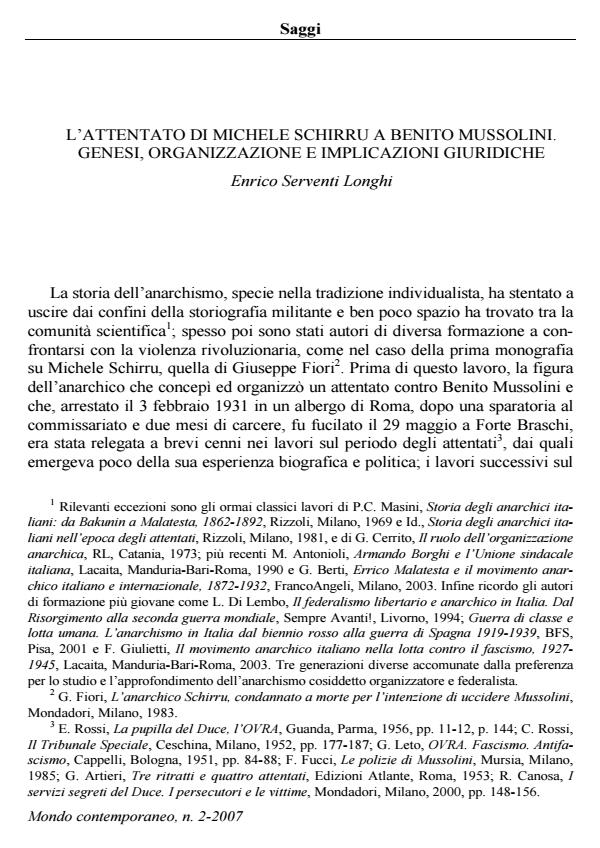L'attentato di Michele Schirru a Benito Mussolini. Genesi, organizzazione e implicazioni giuridiche
Journal title MONDO CONTEMPORANEO
Author/s Enrico Serventi Longhi
Publishing Year 2007 Issue 2007/2
Language Italian Pages 58 P. 5-62 File size 286 KB
DOI
DOI is like a bar code for intellectual property: to have more infomation
click here
Below, you can see the article first page
If you want to buy this article in PDF format, you can do it, following the instructions to buy download credits

FrancoAngeli is member of Publishers International Linking Association, Inc (PILA), a not-for-profit association which run the CrossRef service enabling links to and from online scholarly content.
The essay intends to reconstruct the facts concerning the assassination attempt conceived, but never put in action, by the anarchist Michele Schirru against Benito Mussolini. Schirru was arrested in Rome on 3 February 1931, confessed the will to hit Mussolini, was sentenced to death and shot in Forte Braschi, in Rome, on 29 May 1931. The Schirru’s Case is historically relevant also because it is tied with a basic change in the istitutional structure of the Fascist State. The new Italian Penal Code, also known as Codice Rocco, which included exceptional laws concerning the crimes against the Duce, came in force in June 1931, just few days after Schirru’s death. The anarchist’s trial served well to solve some juridical matters both from the doctrinal and jurisprudential: point of view, as the precise statement of the notions of attentato (failed outrage) and tentativo (attempt), going beyond the distiction between preliminary and executory acts, and the specification of the concepts of crime esecutività (enforceability), idoneità (suitability) and univocità (univocity).
Enrico Serventi Longhi, L'attentato di Michele Schirru a Benito Mussolini. Genesi, organizzazione e implicazioni giuridiche in "MONDO CONTEMPORANEO" 2/2007, pp 5-62, DOI: